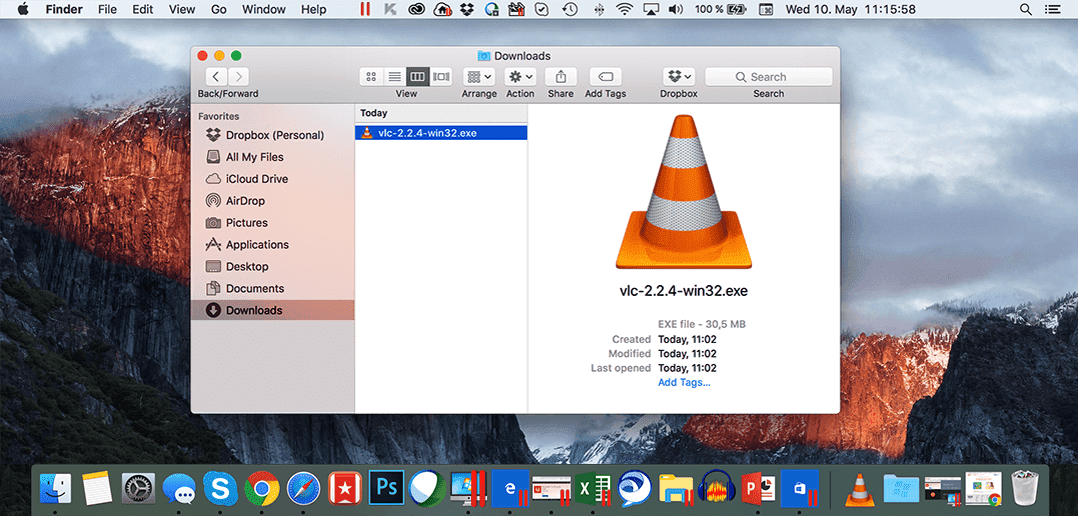

- #How to see .exe file on mac how to
- #How to see .exe file on mac for mac
- #How to see .exe file on mac software
- #How to see .exe file on mac windows
This should answer your question for today. Take a look at this article for more information: Create QuickBooks Desktop Company file: Overview. Navigate to the company file that you want and click Open. To switch between companies, click File from the top menu and select Open Previous Company. Repeat the process to set up other companies. This will work on some EXE files, but not if the EXE file is encrypted or use a proprietary storage system.
#How to see .exe file on mac how to
13 second movie showing how to extract images from an EXE file (a screen saver). When you want to run the EXE file, press OK. In the Run command box, locate your executable file by pressing Browse, or type the file location directly. Alternatively, right-click the Start menu icon and press the Run option.
#How to see .exe file on mac windows
An example EXE file containing photos: AutumnToadStools.EXE. To use the Run command box to run an EXE file, press the Windows key + R on your keyboard.
#How to see .exe file on mac software
EXE file format is widely used for containing millions of software programs. If if finds any, it will extract and save them. exe with UnZipper.according to VersionTracker, this does not exist.any other tool that can give me the contents. This format can be compressed with executable compressors like runtime packers and can be extracted back using CUP386 and UNP. Enter the new company’s name, address and contact information in the appropriate fields, and click Create Company.Ĥ. EXE files contain resources, bitmap graphics, icons, and other components for running an executable program that also resides in the exe file. Select New Company from the drop-down list, and click Express Start.ģ. Open QuickBooks and click File on the top menu bar.Ģ. You have the option to create multiple company files that are entirely separate from each other.ġ. If you run more than one company, you don’t have to purchase a new copy of QuickBooks to manage each company’s finances. Thanks for posting your concern here in the Community, can help you create multiple company files in QuickBooks Desktop. The Chart of Account balance is accessed by other functions and when it is wrong it can throw off other stuff. So the first thing I have to do when I open a company is check to see the balances are correct. When I'm writing checks, I can see the balance go down, when I print the checks the balance goes back up as if the checks were never written (in the Chart of Accounts). I have to rebuild the data so often because after printing checks or doing some accounting like reconciling an account the balance in the account does not match the balance in Chart of Accounts. I will try quitting first then opening in the new company. I rebuild the data almost every day in all three companies because of another issue. Crashes when I am doing any number of different things almost every day - seems pretty random.
#How to see .exe file on mac for mac
Quickbooks for Mac 2014 v15.0.5 R6 is still pretty unstable. The use of an equal sign ( =) wipes all previous permissions for that category.I'm sorry for being so long in replying to your answer, IntuitBiscotti. The u flag sets the permissions for the file owner, g refers to the user group, while o refers to all other users. To remove all existing permissions, set read and write access for the user while allowing read access for all other users, type: chmod u=rw,g=r,o=r file.txt To set file permissions, you’ll use the chmodcommand at the terminal. RELATED: How macOS Catalina's New Security Features Work Setting File Permissions

This is related in part to new security features introduced in macOS Catalina, although file access control lists (ACLs) have been a Mac feature since macOS X 10.4 Tiger back in 2005. If the final character is an at sign ( then it signifies that the file or folder has extended file attributes relating to security, giving certain apps (like Finder) persistent file access.

The first group shows the access levels for the file/folder owner (1), the middle group shows group permissions (2), and the final three shows permissions for any other users (3). The next nine characters are split into groups of three.


 0 kommentar(er)
0 kommentar(er)
